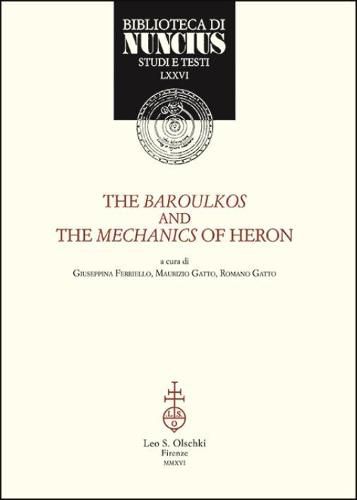Readings Newsletter
Become a Readings Member to make your shopping experience even easier.
Sign in or sign up for free!
You’re not far away from qualifying for FREE standard shipping within Australia
You’ve qualified for FREE standard shipping within Australia
The cart is loading…






The three books of Heron’s Mechanics contain the first systematic theory of simple and compound machines in the history of science, and many other remarkable matters about theoretical and practical mechanics, including three interesting unknown theories by Archimedes. This treatise began to circulate among Western researchers through an Arabic manuscript discovered by Camille Carra de Vaux, who published it together with a French translation in 1893. A German critical edition by Ludwig Leo Nix (1900) and an English one by Aage Gerhardt Drachmann (1963) were then published after this edition. The new critical edition, with a full presentation of all the manuscript sources for the work, is the consequence of the unexpected discovery of four Persian manuscripts, all concerning the second book of this important treatise on mechanics, which opened an unexplored field of research and offered new perspectives, both philological and scientific, in interpreting the text. At the same time, analysis of the work has revealed passages very similar to corresponding passages in works by Leonardo da Vinci and Galileo Galilei, advancing the possibility that Italian scientists of the Renaissance may have been familiar with all or at least part of Heron’s Mechanics.
$9.00 standard shipping within Australia
FREE standard shipping within Australia for orders over $100.00
Express & International shipping calculated at checkout
The three books of Heron’s Mechanics contain the first systematic theory of simple and compound machines in the history of science, and many other remarkable matters about theoretical and practical mechanics, including three interesting unknown theories by Archimedes. This treatise began to circulate among Western researchers through an Arabic manuscript discovered by Camille Carra de Vaux, who published it together with a French translation in 1893. A German critical edition by Ludwig Leo Nix (1900) and an English one by Aage Gerhardt Drachmann (1963) were then published after this edition. The new critical edition, with a full presentation of all the manuscript sources for the work, is the consequence of the unexpected discovery of four Persian manuscripts, all concerning the second book of this important treatise on mechanics, which opened an unexplored field of research and offered new perspectives, both philological and scientific, in interpreting the text. At the same time, analysis of the work has revealed passages very similar to corresponding passages in works by Leonardo da Vinci and Galileo Galilei, advancing the possibility that Italian scientists of the Renaissance may have been familiar with all or at least part of Heron’s Mechanics.